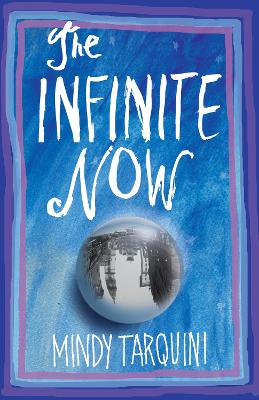Reviewed by Amber (The Literary Phoenix) on
.
Disclaimer
I received this book free of charge in exchange for an honest review. Thank you to NetGalley and Sparkpress for this opportunity.
.
I have a lot of really mixed feelings about The Infinite Now.
On one hand, it was undeniably a really interesting book. On the other hand, it reminded me of a mess of yarn tangled on the floor after my kitten is done playing with it. There are a lot of ideas and characters and intertwining stories. The author reveals very little. Most characters are wrapped around secrets. This book needs to be read very slowly and very carefully, or you'll end up in a corner and not know how you got there.
Lets start with what I loved: the history.
Tarquini clearly took the time to research the influenza epidemic in the United States during World War I. This is something I know a little bit about and this setting was the whole reason I requested this book. Little known fact? The influenza epidemic killed more between between 1918 and 1919 than the entire Great War. Despite its insanely high death tolls, especially for an illness we consider very manageable today, this epidemic doesn't get a lot of attention. The fear people in Fiora's neighborhood had of this disease would have been very real for the time. Details like beggar children in the streets add to the complete societal meltdown because of this illness.
The superstitious behavior of the people on the streets and in the market towards Fiora, as well, seems fairly accurate as well. It would have seemed suspicious and roused anger to see a girl walking the streets, completely healthy, while loved ones were dying. The architecture, transportation, market situation - all of these seem accurate for the period and were well done.
What I didn't like: the fantasy.
Usually I dive right into the fantasy elements of the book, but I really felt like it overcomplicated the story in this case. Fiora was the local fortune-teller's daughter, and as such she's treated with such scrutiny. Everything she says is considered prophecy and so, when something bad happens, the townsfolk blame her.
You have a few different elements of fantasy in this book:
- The magic curtain.
- The guaratrice.
- The bubble.
In ways, these are metaphorical. The guaratrice ("healer" in an Italian community) certainly has a part to play in this town. Without giving away too much of the novel, I will say that I felt these elements were placed in the story to explain behavior and sickness, but the story would have stood on its own without them. Especially the curtain and the bubble. The curtain and the bubble are part of Fiora's character development overall, and they relate to the title, but they don't contribute very much to the soul of the story, in my opinion. That's just my opinion, though! I really think that this story could have untangled itself a bit, ridden with the theme of superstition and epidemic, and done quite well.
I have mixed feelings about the characters.
Fiora, in particular, vexes me.
At the beginning of this story, Fiora is demure and shy. She behaves very young and confused, and I immediately disliked her - especially when I learned she was seventeen. As the story continued, she blossomed more into her true age and personality, and by about 50% through she was a larger character. Who Fiora was at the beginning, middle, and end were three different characters and I did not feel the beginning and middle characters flowed together well.
Other characters are good; still others are vexing. I found both the old man and the guaratrice to be flat and secretive to the point of exasperation. However, I really liked Carlo and Bendetta. There is a scene near the middle of the book where the three - Carlo, Bendetta, and Fiora - are sitting in Bendetta's kitchen determined to help their neighbors and displaced children and they call themselves the Three Musketeers. This is absolutely the best scene in the book.
Other things that didn't work for me:
I felt that the allusions to The Wonderful Wizard of Oz were awkward and didn't quite suit the story. While the guaratrice seems to line up with the Wicked Witch of the West character, I did not feel the rest of the story lined up too Dorothy and the others. Even Fiora, as she drew relations in her mind, seemed to be stretching.
The homosexuality seemed tossed, haphazard, and didn't resolve well. It made me cringe a bit? It didn't fit the story and seemed tossed in just for the sake of being there. The way it was managed in the end seemed very "this is the solution and we'll pretend it never happened!" and while I'm not going to say it was never treated that way in the early 1900s, again it seemed very rough. While I don't object to having homosexuality in this book, it ultimately served no purpose either as part of the love story or plot, and felt tossed in for the benefit of a demographic.
The ending seemed to switch perspectives from the present into the distant future, and it was jarring.
If anyone is wondering, a Big Ben is a clock. I don't think they're ever referred to as a clock, and while I drew a comparison to London's famous Big Ben, I had to look it up because they're mentioned a lot.
Overall?
I know I have a lot of criticisms, but I did enjoy reading this book. I really liked the historical aspects and spending time in this Italian-American neighborhood in the early 1900s. I think the writing style was overall interesting and it kept me coming back to the story.
Reading updates
- Started reading
- 22 September, 2017: Finished reading
- 22 September, 2017: Reviewed
